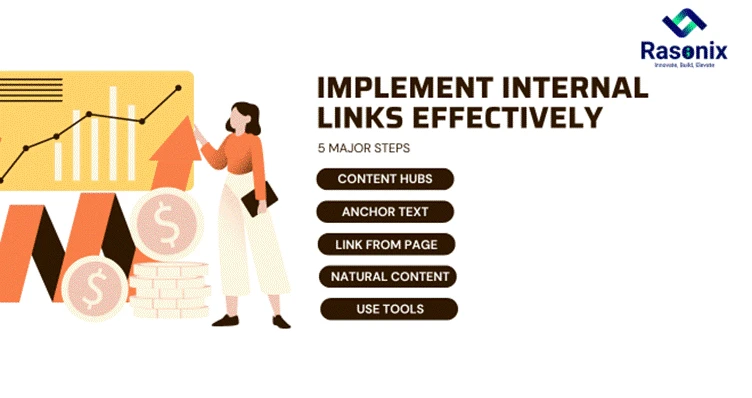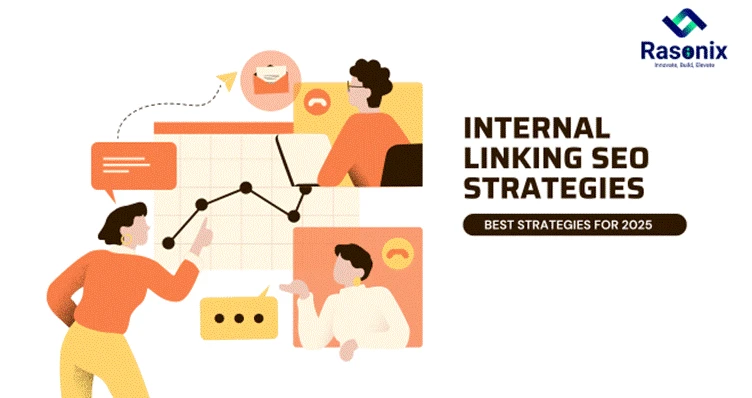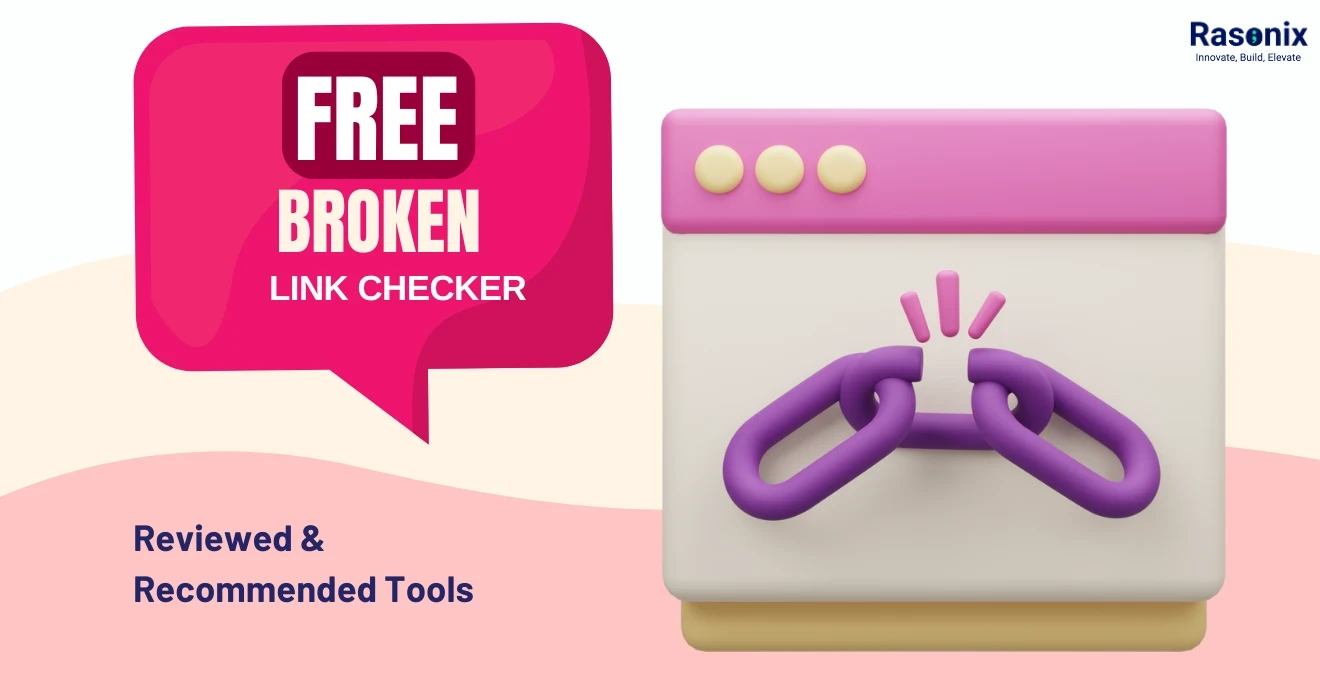In the continuously changing world of SEO, internal linking SEO is one of the most powerful yet underused tools in the marketer's toolbox. Peculiar for such an important part of SEO marketing strategy that often receives little attention and credit for its power. You may say, "Sure, but I just don't think it matters much with all the headline-grabbing tactics like link building, keyword research, schema markup, etc." But the underlying point is that internal linking SEO strengthens your marketing plan! Internal linking is an important layer in site architecture, site crawlability, topical authority, and user engagement, among others.
Moving into 2025, Google's guidelines are heavily leaning on context, semantic relevance, and user intent. You're no longer at a point where it only matters what content you build, but how it is related to each other, making sure it is easily accessed and crawled by search engines, while users are still able to explore related content without feeling like they're lost in the chaotic surface world of triggerlinks.
Internal links are an essential part of assembling your overall content strategy. Whether you're a blogger trying to keep readers on your site longer, or an eCommerce site trying to point the user to product pages, or a SaaS company funnelling users to your forms or demos, it's all about proper internal linking SEO to create a cohesive user experience.
In this guide, we will go through the precise way to implement internal linking SEO like the experts do, from common mistakes to advanced strategies that produce real experience!
What is Internal Linking in SEO?

Internal linking SEO refers to the practice of linking one page of a website to another page on the same domain. It helps establish website architecture, aids in crawling and indexing, and distributes link equity.
Example in HTML:
<a href="/blog/seo-optimizer-tools">Check out the best SEO optimizer tools</a>
This link connects to another internal blog post and uses descriptive anchor text, improving both SEO and user understanding.
Example: Your Website is a City
Imagine your website is a city, each web page is a building, and internal links are the roads connecting them. Without roads, people and search engines will struggle to navigate. The more efficient your road network, the better connected and accessible your city becomes.
Why Internal Linking SEO is Important in 2025
1. Enhances User Experience
Internal links guide visitors to relevant content, keeping them on your site longer and helping them find answers quickly.
Example: A user reading about “Technical SEO” might appreciate a link to “XML Sitemaps” or “Robots.txt optimisation.”
2. Improves Crawlability and Indexation
Google bots use internal links to discover and index new or updated content. Without proper linking, even great pages can remain invisible to search engines.
3. Distributes Link Equity
High-authority pages can “share” their SEO value with other internal pages through internal links, helping improve the rankings of newer or deeper content.
4. Establishes Context and Topical Relevance
Search engines rely on anchor text and link context to understand the content relationship, reinforcing topical authority.
5. Boosts Key Metrics
Internal links increase:
● Pageviews per session
● Session duration
● Conversion potential
They decrease:
● Bounce rate
● User confusion
Basics of Internal Linking | HTML
An internal link is created using the anchor <a> tag with a relative path:
<a href="/services/seo">Explore our SEO Services</a>
Absolute vs. Relative URLs
|
Type
|
Example
|
Best Use Case
|
|
Relative URL
|
/about-us
|
Internal links - cleaner and flexible
|
|
Absolute URL
|
https://example.com/about-us
|
Cross-domain linking, sitemap, etc.
|
Internal Linking vs External Linking
|
Feature
|
Internal Linking
|
External Linking
|
|
Definition
|
Links that point to another page on the same website
|
Links that point to a page on a different website
|
|
Purpose
|
Improves navigation, distributes link equity, helps crawlability
|
Builds authority, supports credibility, references sources
|
|
Link Equity Flow
|
Keeps link equity within your site
|
Passes equity to external sources
|
|
SEO Benefit
|
Enhances site structure, rankings of internal pages
|
Enhances content trust, can improve relevance
|
|
Anchor Text Usage
|
Should be keyword-rich and contextual
|
Should match target link intent and user expectation
|
|
Control Level
|
Full control over placement, anchor text, and destination
|
Limited control once link is live
|
|
Example
|
<a href="/blog/on-page-seo">On-Page SEO</a>
|
<a href="https://moz.com/learn/seo/internal-link">Moz Guide</a>
|
|
Crawlability Impact
|
Guides search bots efficiently
|
May or may not assist bot discovery of external content
|
|
Trust Factor
|
Builds internal authority
|
Builds trust with readers by referencing reputable sources
|
How to Implement Internal Links Effectively

1. Create Content Hubs & Topic Clusters
Group related articles or pages around a central "pillar" or "cornerstone" content.
● Example:
● Pillar: SEO Guide
● Internal links to: On-page SEO, Off-page SEO, Technical SEO, Link Building
2. Use Keyword-Rich Anchor Text
Instead of saying:
“Click here for more information.”
Use:
“Learn how internal linking SEO improves rankings.”
This improves semantic understanding and keyword relevance.
3. Link from High-Authority Pages
Identify pages that already rank well or receive high traffic, and use them to boost other pages by linking contextually.
4. Keep It Natural
Don't spam links, use them where they make sense and enrich the reading experience.
5. Use Tools to Discover Link Opportunities
SEO platforms like:
● Ahrefs Site Audit
● Screaming Frog
● Surfer SEO
● LinkWhisper (for WordPress)
Can identify orphaned pages or suggest internal linking SEO ideas.
How Many Internal Links Per Page?
Google doesn’t set a fixed number, but here are some practical guidelines:
● Short articles (under 1000 words): 3 - 5 internal links
● Medium (1000–2000 words): 5 - 10 links
● Long-form (2000+ words): 10 - 15 links
Quality over quantity. Only link when it's relevant and adds value.
Internal Linking SEO Mistakes to Avoid
1. Overusing the Same Anchor Text
Repeated use of the same anchor (e.g., "click here") looks unnatural and offers poor context.
2. Broken Internal Links
404s can confuse users and waste crawl budgets. Use tools to audit and fix them regularly.
3. Linking to Low-Value or Thin Pages
Only link to pages that are helpful, informative, or critical to your conversion goals.
4. Ignoring Mobile UX
Ensure links are spaced appropriately and are easy to tap on smaller screens.
Advanced Internal Linking SEO Strategies for 2025

1. Silo-Based Site Architecture
Organize your content into “silos” or clusters to build topic authority and help Google understand your site.
Example:
● /digital-marketing/
● /digital-marketing/seo/
● /digital-marketing/content-marketing/
● /digital-marketing/ppc/
Interlink each within its silo, and then connect relevant silos using strategic anchor text.
2. Use of AI for Internal Linking
AI tools like Surfer SEO and MarketMuse now suggest internal links based on semantic content analysis. This ensures contextually strong linking that aligns with user intent.
3. Table of Contents with Anchor Links
For long-form blogs, use anchor links to improve navigation and pass authority to subsections.
<a href="#section-3">How Many Internal Links?</a>
4. Optimise for Conversions
Add internal CTAs that guide readers toward your conversion goals (forms, demos, service pages).
Example:
“Want to audit your internal link structure? Book a Free SEO Consultation!”
Case Study: Internal Linking Impact
Website: B2B SaaS Blog
Challenge: High bounce rate, poor indexing of older blogs
Action Taken:
● Identified cornerstone content
● Updated 60+ blog posts with contextual internal links
● Used keyword-rich anchor texts
Result in 60 Days:
● 27% increase in organic traffic
● 19% higher average session duration
● 11% more conversions via internal CTAs
How to Audit Internal Links
- Crawl the Site - Use Screaming Frog or Ahrefs
- Identify Orphan Pages - Pages with no internal links
- Fix Broken Links - Repair 404s and redirects
- Optimise Anchor Text - Vary phrases, include keywords
- Check Crawl Depth - Important content should be 2-3 clicks from the homepage
Internal Linking & Semantic SEO
In 2025, search engines will rely more on semantic relationships and topic clusters. Internal linking helps map your content in a way that machines can understand the depth and breadth of your expertise.
This not only helps with ranking individual pages but also boosts your overall domain authority on specific topics.
Final Checklist for Internal Linking SEO in 2025:
These are the checklist to improve your SEO,
● Use descriptive, keyword-rich anchor text
● Connect new content to old content (and vice versa)
● Build topic clusters around cornerstone content
● Fix broken and orphaned links
● Track metrics (bounce rate, session time, crawl rate)
● Keep user experience central to your strategy
Conclusion:
Internal linking SEO isn’t just a technical task you check off during content uploads, it’s a strategic pillar of SEO that ties your website together both for users and search engines. As digital competition intensifies in 2025, the sites that rise to the top won’t just have good content, they’ll have content that’s intelligently connected, easy to navigate, and deeply aligned with user needs.
By weaving contextual internal links throughout your site, you improve crawlability, boost the visibility of important pages, enhance user journeys, and ultimately guide visitors toward action. Whether it's exploring related blog posts, reaching your service pages, or clicking through to your product listings, internal linking empowers both discovery and conversion.
Remember, every internal link is an opportunity: an opportunity to educate, to retain, to rank, and to convert. Treat it with as much attention as you would your external backlinks or on-page SEO. So take this guide, audit your current structure, build strong topic clusters, connect high-value pages, and commit to a user-first internal linking SEO strategy.
And if you need help? Our SEO specialists at Rasonix are just a click away from audits to implementation. We'll ensure your internal link architecture is built for both humans and search engines. Here’s to a better-connected, better-ranking website in 2025 and beyond.





















 Subscribe Now
Subscribe Now